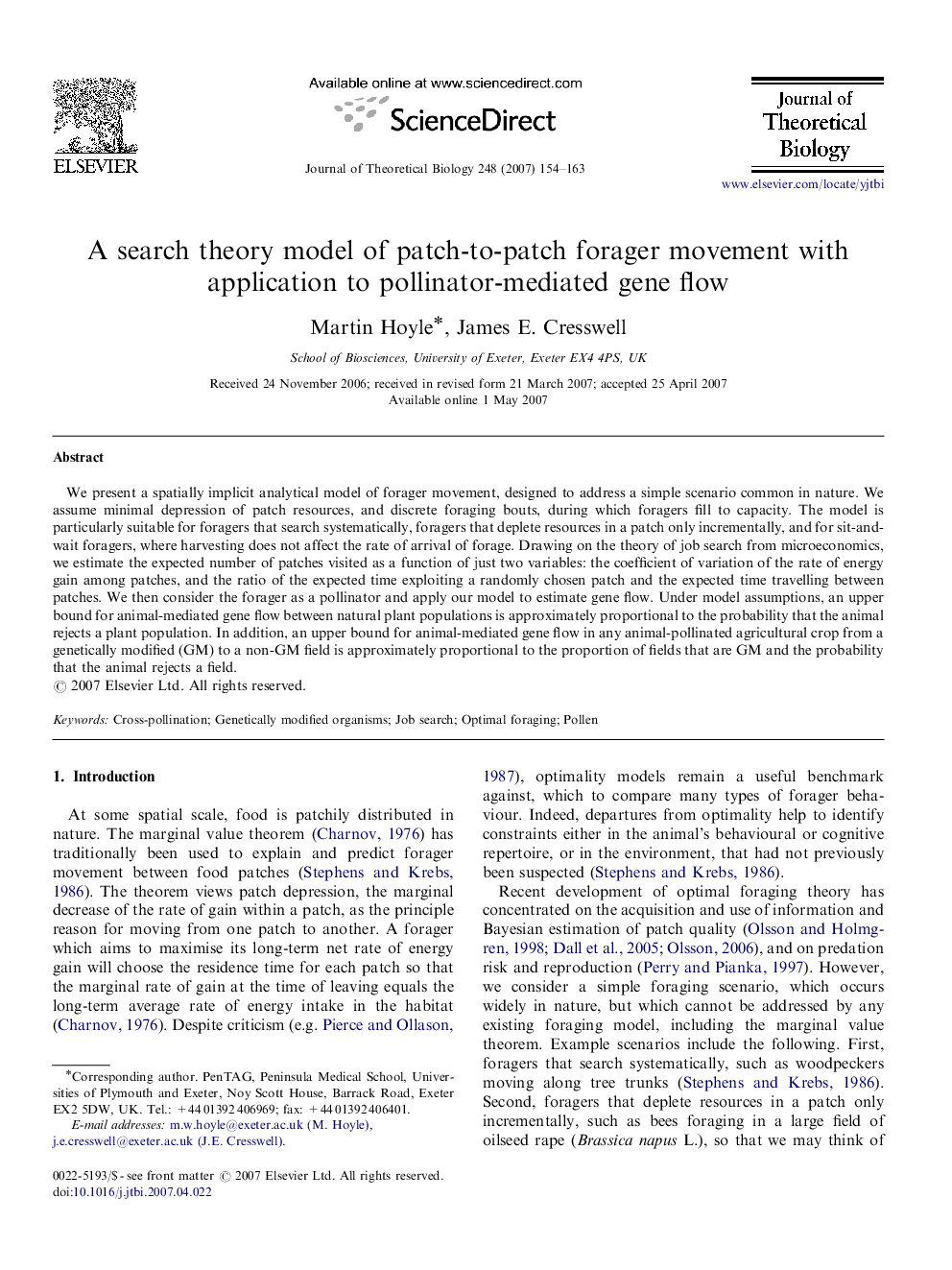| Article ID | Journal | Published Year | Pages | File Type |
|---|---|---|---|---|
| 4499128 | Journal of Theoretical Biology | 2007 | 10 Pages |
We present a spatially implicit analytical model of forager movement, designed to address a simple scenario common in nature. We assume minimal depression of patch resources, and discrete foraging bouts, during which foragers fill to capacity. The model is particularly suitable for foragers that search systematically, foragers that deplete resources in a patch only incrementally, and for sit-and-wait foragers, where harvesting does not affect the rate of arrival of forage. Drawing on the theory of job search from microeconomics, we estimate the expected number of patches visited as a function of just two variables: the coefficient of variation of the rate of energy gain among patches, and the ratio of the expected time exploiting a randomly chosen patch and the expected time travelling between patches. We then consider the forager as a pollinator and apply our model to estimate gene flow. Under model assumptions, an upper bound for animal-mediated gene flow between natural plant populations is approximately proportional to the probability that the animal rejects a plant population. In addition, an upper bound for animal-mediated gene flow in any animal-pollinated agricultural crop from a genetically modified (GM) to a non-GM field is approximately proportional to the proportion of fields that are GM and the probability that the animal rejects a field.
